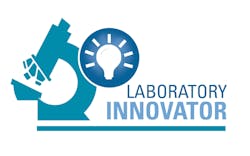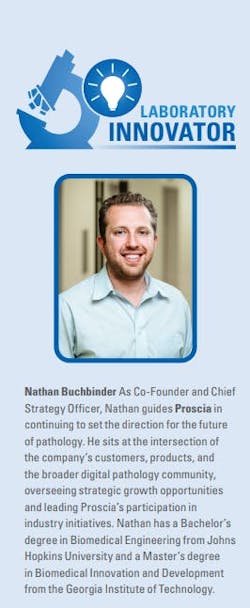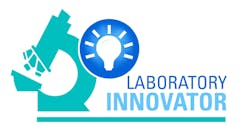In the Medscape Physician Burnout & Depression Report: “We Have Much Work to Do” released earlier this year, forty-nine percent of physicians told Medscape they feel burned out. Why are pathologists, specifically, feeling so burnt out?
Pathology is facing an intensifying supply and demand challenge. The shortage of pathologists has been worsening for almost two decades now. Between 2007 and 2017, the pathologist population declined by 17.5%.1 A recent analysis demonstrated that hiring for pathologists is near an all-time high;2 meanwhile, the global cancer burden continues to increase. The number of new cancer cases per year in the United States is expected to cross 2 million for the first time ever in 2024.3
The resulting impact is burnout; pathologists must read more cases and work longer hours, all while maintaining the commitment to quality that they pride themselves on. On top of this, diagnostic complexity is increasing as companion diagnostics and specialty tests continue to make their way into the clinic. These advancements are great for patients and help pathologists to make even more precise diagnoses, but they also put added burden on pathologists.
How can laboratories alleviate the problem for their pathologists?
Perhaps it goes without saying, but laboratories must first recognize that burnout is real. In fact, burnout has been steadily increasing over the past several years as the supply and demand challenge has heightened. Hiring one or two more pathologists is not going to resolve it.
Alleviating the burnout problem requires laboratories to truly transform their operations, and I believe that digital pathology is a critical part of this transformation. In shifting the standard from microscope to high-resolution image, digital pathology has been proven to deliver between 15 to 20% efficiency gains while helping pathologists to improve confidence.
Digital pathology also enables pathologists to work remotely, giving them flexibility to enjoy dinner with their family or attend their child’s sports game on nights when they might otherwise have needed to work late in the laboratory. By extension, digital pathology opens a broader pool of talent from which laboratories can hire since pathologists don’t need to be in the same geographic area. This may help laboratories to relieve some of the pressure on pathologists by spreading the workload among a bigger team.
Can you share more about the benefits that digital pathology is delivering?
Let’s unpack the efficiency and confidence gains that digital pathology delivers since these are the most commonly cited benefits.
Traditional analog workflows have inherent inefficiencies associated with handling glass slides. Digital pathology can overcome them with intelligent workflows that help to not only streamline internal operations but also improve turnaround times for patients. For example, automated and dynamic case assignment can increasingly balance pathologists’ workloads and ensure that cases are routed to the subspecialist with the best expertise. The right digital pathology workflow solution will also centralize all diagnostic data so that pathologists no longer need to spend time toggling among screens and get a more holistic view of the patient.
We also see efficiency gains when it comes to collaboration. Pathologists can share whole slide images in just a few clicks, eliminating the need to ship glass slides. This saves them time and means that patients can receive diagnoses faster. It also means that pathologists can more easily get a second opinion, helping to improve confidence.
Finally, I’d be remiss not to point out that digital pathology also lays the foundation for AI applications that further deliver on these benefits.
How is artificial intelligence advancing pathology’s potential?
Each pathology image contains over 1 billion pixels that tell the story of a patient’s disease. AI is able to unlock insights from this incredibly rich data that go beyond what the human eye can see. These insights can help to improve diagnoses, and by extension, patient outcomes.
Companion diagnostics, like PD-L1 quantification algorithms, are a great example of the AI applications that generate these insights. Such solutions consistently identify biomarkers to give pathologists more information and enable them to make faster decisions. They also mark a big step forward in realizing the promise of precision medicine. Companion diagnostics are often associated with precision therapeutics and help to determine which patients are best suited for these treatments.
These insight-generating applications represent one category of AI solutions that we see in practice today. There’s another category referred to as process automation applications, which reduce time-consuming tasks. Consider the benefits of an AI-powered quality control solution that can complete this tedious work up to six times faster than manual review. It enables laboratory staff to focus on adding value elsewhere and positions pathologists to make a better diagnosis since they are working with high-quality data.
I should note that both categories of AI applications play a key role in fighting pathologist burnout since they empower pathologists to work faster and more confidently. Process automation applications likely also free up team members to help pathologists with other tasks around the laboratory.
What are best practices to follow for clinical laboratories considering incorporating digital pathology?
It’s perfectly fine to start small, but don’t forget to think big. Many laboratories initially go digital by focusing on a specific use case, like collaboration and consults. This makes sense since going digital is a true transformation that requires investing in technology and reshaping processes to make the most of the technology.
At the same time, it’s important to think big and plan for the future. Laboratories often quickly see the benefits of digital pathology and want to scale their operations to achieve even more impact. We are also just scratching the surface when it comes to realizing the full promise of digital pathology and AI. There are so many more use cases and innovative solutions that will emerge over time, and laboratories want to be well-situated to capitalize on them.
Laboratories should also recognize that they don’t have to undergo the transition from microscope to image alone. They should seek out technology vendors that want to serve as a trusted partner. Early adopters have paved the way, and an experienced vendor will be able to help the laboratory define its goals, build a business case, and make the right technology selections to maximize ROI both today and in the future.
References
1. Metter DM, Colgan TJ, Leung ST, Timmons CF, Park JY. Trends in the US and Canadian pathologist workforces from 2007 to 2017. JAMA Netw Open. 2019;2(5):e194337. doi:10.1001/jamanetworkopen.2019.4337.
2. Klipp J. Pathologist Job Openings Remain Near Record High. Laboratory Economics. 2023;18(10).
3. 2024--first year the US expects more than 2M new cases of cancer. Cancer.org. Published January 17, 2024. Accessed April 1, 2024. https://www.cancer.org/research/acs-research-news/facts-and-figures-2024.html.






